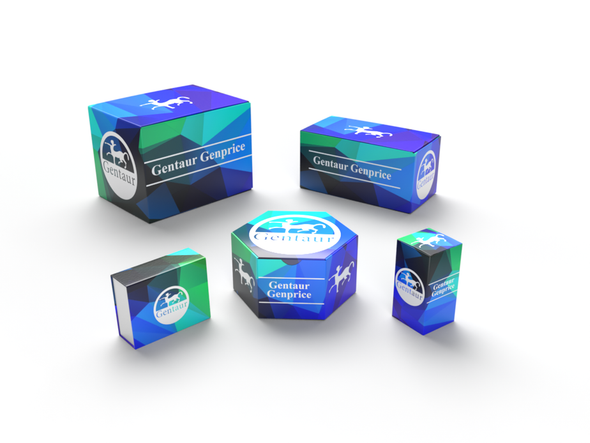749
Mouse Epidermal growth factor (EGF) ELISA Kit | KTE71220
- SKU:
- 749-KTE71220
- Availability:
- Usually ships in 5 working days
Description
Mouse Epidermal growth factor (EGF) ELISA Kit | KTE71220 | Gentaur UK, US & Europe Distribution
Application: This Mouse Epidermal growth factor (EGF) ELISA Kit employs a two-site sandwich ELISA to quantitate EGF in samples. An antibody specific for EGF has been pre-coated onto a microplate. Standards and samples are pipetted into the wells and anyEGF present is bound by the immobilized antibody. After removing any unbound substances, a biotin-conjugated antibody specific for EGF is added to the wells. After washing, Streptavidin conjugated Horseradish Peroxidase (HRP) is added to the wells. Following a wash to remove any unbound avidin-enzyme reagent, a substrate solution is added to the wells and color develops in proportion to the amount of EGF bound in the initial step. The color development is stopped and the intensity of the color is measured.
Detection Method: Colorimetric
Conjugate: N/A
Sample Type: Cell culture supernatants#Serum#Plasma#Other biological fluids
Assay Type: Multiple steps standard sandwich ELISA assay with a working time of 3-5 hours. It depends on the experience of the operation person.
Kit Component: • Mouse Epidermal growth factor microplate
• Mouse Epidermal growth factor standard
• Mouse Epidermal growth factor detect antibody
• Streptavidin-HRP
• Standard diluent
• Assay buffer
• HRP substrate
• Stop solution
• Wash buffer
• Plate covers
Features & Benefits: Mouse Epidermal growth factor (EGF) ELISA Kit has high sensitivity and excellent specificity for detection of Mouse EGF. No significant cross-reactivity or interference between Mouse EGF and analogues was observed.
Calibration Range: Please inquire
Limit Of Detection: Please inquire
Usage Note: • Do not mix components from different kit lots or use reagents beyond the kit expiration date.
• Allow all reagents to warm to room temperature for at least 30 minutes before opening.
• Pre-rinse the pipet tip with reagent, use fresh pipet tips for each sample, standard and reagent to avoid contamination.
• Unused wells must be kept desiccated at 4 °C in the sealed bag provided.
• Mix Thoroughly is very important for the result. It is recommended using low frequency oscillator or slight hand shaking every 10 minutes.
• It is recommended that all samples and standards be assayed in duplicate or triplicate.
Storage Instruction: The unopened kit should be stored at 2 - 8°C. After opening, please store refer to protocols.
Shipping: Gel pack with blue ice.
Precaution The product listed herein is for research use only and is not intended for use in human or clinical diagnosis. Suggested applications of our products are not recommendations to use our products in violation of any patent or as a license. We cannot be responsible for patent infringements or other violations that may occur with the use of this product.
Background: Epidermal growth factor (EGF) was discovered in crude preparations of nerve growth factor prepared from mouse submaxillary glands as an activity that induced early eyelid opening, incisor eruption, hair growth inhibition, and stunting of growth when injected into newborn mice.EGF is a member of a family of growth factors that bind to the same 170 kDa receptor, including TGF-, vaccinia growth factor and amphiregulin. EGF is initially synthesized as a large (130 kDa) precursor molecule in which the mature, soluble EGF sequence (6 kDa) is located. The precursor, which functions as a source for soluble EGF, may also have a role in mediation of intercellular communication between cells displaying pro-EGF on their surfaces and cells with EGF receptors.
Alternative Names: EGF
Search name: EGF
Tag: EGF






